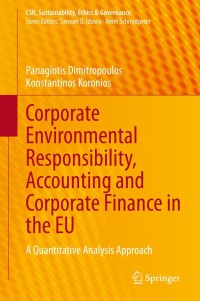Question
eBook Notes and Interest McLaughlin Inc. operates with a June 30 year-end. During 2017, the following transactions occurred: January 1: Signed a one-year, 10% loan
eBook
Notes and Interest
McLaughlin Inc. operates with a June 30 year-end. During 2017, the following transactions occurred:
- January 1: Signed a one-year, 10% loan for $35,000. Interest and principal are to be paid at maturity.
- January 10: Signed a line of credit with Little Local Bank to establish a $560,000 line of credit. Interest of 9% will be charged on all borrowed funds.
- February 1: Issued a $28,000 non-interest-bearing, six-month note to pay for a new machine. Interest on the note, at 12%, was deducted in advance.
- March 1: Borrowed $210,000 on the line of credit.
- June 1: Repaid $140,000 on the line of credit plus accrued interest.
- June 30: Made all necessary adjusting entries.
- August 1: Repaid the non-interest-bearing note.
- September 1: Borrowed $280,000 on the line of credit.
- November 1: Issued a three-month, 8%, $16,800 note in payment of an overdue open account.
- December 31: Repaid the one-year loan [from transaction (a)] plus accrued interest.
How does this entry affect the accounting equation? If a financial statement item is not affected, select "No Entry" and leave the amount box blank or enter 0. If the effect on a financial statement item is negative, i.e, a decrease, be sure to enter the answer with a minus sign.
| Balance Sheet | Income Statement | |||||||||||||
| Stockholders' | Net | |||||||||||||
| Assets | = | Liabilities | + | Equity | Revenues | Expenses | = | Income | ||||||
| CashInterest ExpenseInterest PayableNotes PayableNotes ReceivableNo Entry | fill in the blank 19f45ff82012fbe_2 | Accounts PayableCashDiscount on Notes PayableInterest PayableNotes ReceivableNo Entry | fill in the blank 19f45ff82012fbe_4 | fill in the blank 19f45ff82012fbe_5 | CashInterest ExpenseInterest RevenueNotes PayableNotes ReceivableNo Entry | fill in the blank 19f45ff82012fbe_7 | Accounts PayableAccounts ReceivableCashInterest PayableNotes PayableNo Entry | fill in the blank 19f45ff82012fbe_9 | fill in the blank 19f45ff82012fbe_10 | |||||
| Accounts PayableCashInterest PayableInterest ReceivableNotes PayableNo Entry | fill in the blank 19f45ff82012fbe_12 | CashInterest ExpenseInterest PayableNotes PayableNotes ReceivableNo Entry | fill in the blank 19f45ff82012fbe_14 | fill in the blank 19f45ff82012fbe_15 | CashInterest ExpenseInterest ReceivableNotes PayableNotes ReceivableNo Entry | fill in the blank 19f45ff82012fbe_17 | Accounts PayableCashDiscount on Notes PayableInterest PayableNotes PayableNo Entry | fill in the blank 19f45ff82012fbe_19 | fill in the blank 19f45ff82012fbe_20 | |||||
j. December 31: Repaid the one-year loan [from transaction (a)] plus accrued interest.
| Activity | OperatingInvestingFinancingInvesting and Financing |
| Accounts | Cash Increase, Notes Payable Decrease, Interest Payable Decrease, Interest Expense IncreaseCash Increase, Notes Payable Decrease, Interest Payable Decrease, Interest Expense DecreaseCash Decrease, Notes Payable Decrease, Interest Payable Decrease, Interest Expense IncreaseCash Decrease, Notes Payable Decrease, Interest Payable Decrease, Interest Expense Decrease |
| Statement(s) | Balance Sheet onlyIncome Statement onlyBalance Sheet and Income Statement |
How does this entry affect the accounting equation? If a financial statement item is not affected, select "No Entry" and leave the amount box blank or enter 0. If the effect on a financial statement item is negative, i.e, a decrease, be sure to enter the answer with a minus sign.
| Balance Sheet | Income Statement | |||||||||||||
| Stockholders' | Net | |||||||||||||
| Assets | = | Liabilities | + | Equity | Revenues | Expenses | = | Income | ||||||
| Accounts PayableCashInterest ExpenseInterest PayableNotes PayableNo Entry | fill in the blank d6f8b7067047050_2 | Accounts PayableCashInterest ExpenseInterest PayableNotes ReceivableNo Entry | fill in the blank d6f8b7067047050_4 | fill in the blank d6f8b7067047050_5 | Accounts PayableCashGain on NoteInterest PayableNotes ReceivableNo Entry | fill in the blank d6f8b7067047050_7 | Accounts PayableAccounts ReceivableCashInterest ExpenseLoss on NoteNo Entry | fill in the blank d6f8b7067047050_9 | fill in the blank d6f8b7067047050_10 | |||||
| Accounts PayableInterest ExpenseInterest ReceivableNotes PayableNotes ReceivableNo Entry | fill in the blank d6f8b7067047050_12 | Accounts PayableCashDiscount on Notes PayableNotes PayableNotes ReceivableNo Entry | fill in the blank d6f8b7067047050_14 | fill in the blank d6f8b7067047050_15 | Accounts PayableCashInterest ExpenseInterest PayableLoss on NoteNo Entry | fill in the blank d6f8b7067047050_17 | Accounts PayableCashGain on NoteInterest PayableNotes ReceivableNo Entry | fill in the blank d6f8b7067047050_19 | fill in the blank d6f8b7067047050_20 | |||||
2. As of December 31, which notes are outstanding? How much interest is due on each? Do not round intermediate calculations. If required, round your final answers to the nearest dollar.
| Outstanding Debt | Principal Balance | Interest Payable |
| Line of credit | $fill in the blank 26673200bfde067_1 | $fill in the blank 26673200bfde067_2 |
| 8% Note | $fill in the blank 26673200bfde067_3 | $fill in the blank 26673200bfde067_4 |
Step by Step Solution
There are 3 Steps involved in it
Step: 1

Get Instant Access to Expert-Tailored Solutions
See step-by-step solutions with expert insights and AI powered tools for academic success
Step: 2

Step: 3

Ace Your Homework with AI
Get the answers you need in no time with our AI-driven, step-by-step assistance
Get Started


